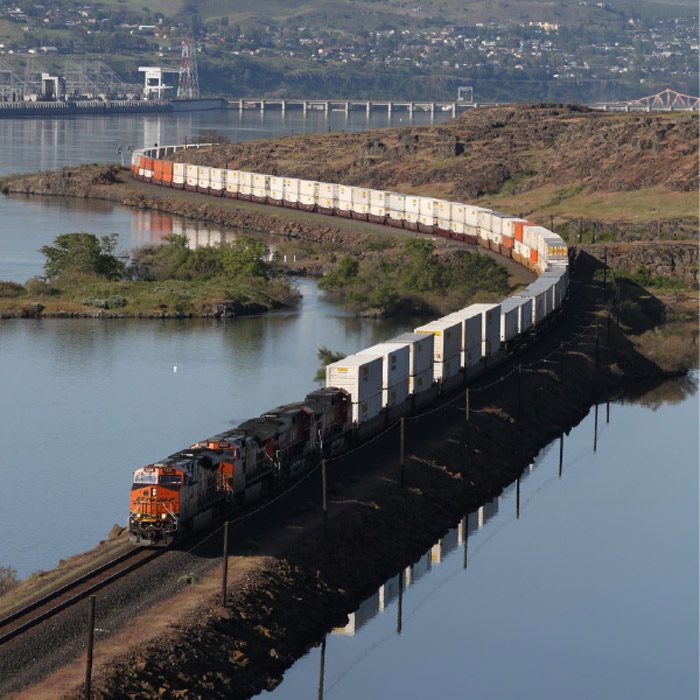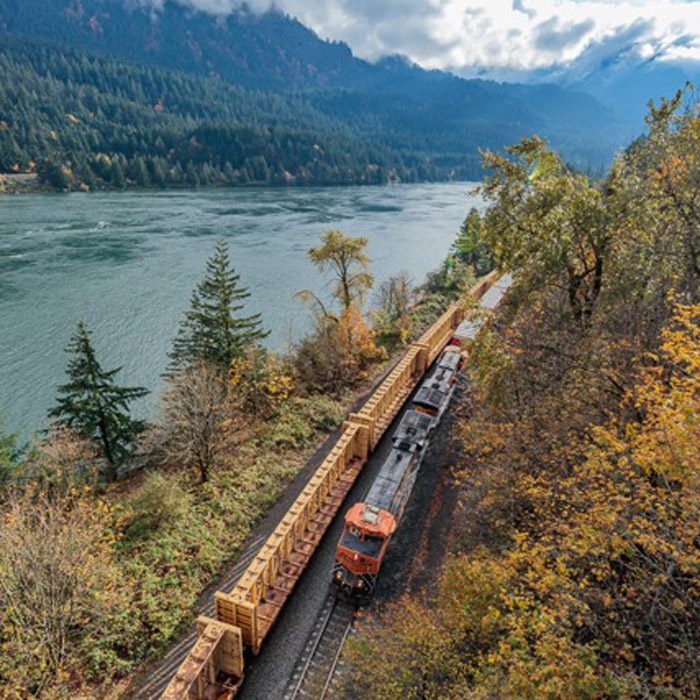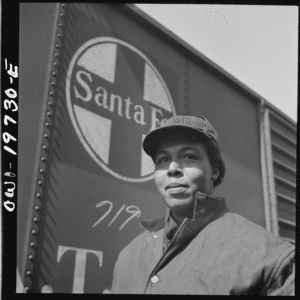
Hortense W. Thompson, one of several women freight handlers at the ATSF freight depot in Kansas City, Mo. in 1943. Photograph by Jack Delano. Library of Congress, Prints & Photographs Division, FSA/OWI Collection LC-DIG-fsa-8d26527.
Women’s History Month, observed in the United States each March since 1987, provides the opportunity to reflect on the contributions of women to our world. Women have been involved in railroading since the 1800s. Some of the first railroad jobs they held were as registered nurses and what was referred to at the time as stewardesses in passenger cars. Over the decades, women’s roles expanded as additional opportunities became available.
Here are a few of the many past female contributions to the railroad industry:
- Miss E.F. Sawyer became the first female telegraph operator when she was hired by the Burlington Railroad in Montgomery, Illinois, in 1872.
- Fred Harvey hired “Harvey Girls” to work at the various Fred Harvey hotels and dining rooms (“Harvey Houses”) across the American southwest along the Santa Fe rail line. The Harvey Girls were featured in a 1946 movie by the same name directed by George Sidney and starring Judy Garland.
- In the 1870s, Eliza Murfey created devices for improving how bearings on a rail wheel attached to train cars.
- Mary Colter was an architect who designed important buildings for the Santa Fe Railway and iconic landmark structures in the Grand Canyon, including Desert View Watchtower. La Posada hotel in Winslow, Arizona, remains a favorite hotel for visitors wishing to experience Colter’s famous architecture and interior design.
- During World Wars I and II, railroads hired women to fill jobs left by men who went to serve. Most women railway workers held clerical positions, but some obtained traditionally male-dominated positions in yards and locomotive shops.
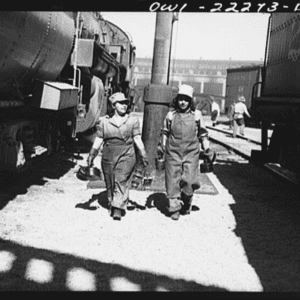
Women workers at the ATSF roundhouse in San Bernardino, Calif. in 1943. They were responsible for replacing lamps and oil cans on incoming locomotives. Photograph by Jack Delano. Library of Congress, Prints & Photographs Division, FSA/OWI Collection, LC-USW3-022273-D.
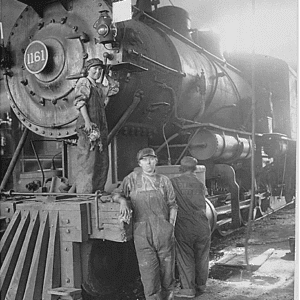
The War Department cataloged this photo of two women working on the Great Northern Railway near Great Falls, Mont. c. 1918. National Archives, Records of War Department, General and Special Staffs (165-WW-595-D-14).

